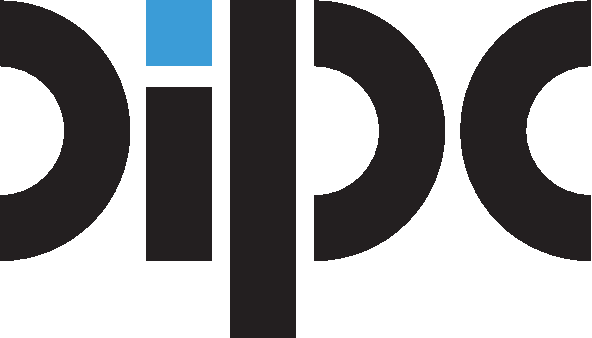

12 December 2019 – Research paper published in Physical Review Letters
Single-photon emission mediated by single-electron tunneling in plasmonic nanojunctions
Q. Schaeverbeke, R. Avriller, T. Frederiksen and F. Pistolesi
Phys. Rev. Lett. 123, 246601 (2019)
12 November 2019 – Advanced school on Quantum Transport using SIESTA
The DIPC will host the upcoming CECAM-sponsored workshop
on "Advanced school on Quantum Transport using SIESTA" on 23-27. march 2020.
Details and registration here.
Cancelled due to Covid-19.
8 November 2019 – Kick-off the EU-funded SPRING FET-Open project
Nanomagnets made of graphene for faster and more sustainable information technologies
We are excited to be a partner in the EU-funded H2020 project
SPRING – SPin Research IN Graphene
that is granted EUR3.5 million to develop new graphene-based magnetic components that contribute to the creation of faster
and environmentally friendly electronic devices. The international research project is coordinated by CIC nanoGUNE (ES) in
partnership with IBM (CH), University of Santiago de Compostela (ES),
Technical University of Delft (NL) and University of Oxford (UK), and Donostia
International Physics Center (ES).
Fore more information see the SPRING fact sheet.
5 April 2019 – Research paper published in Nature Communications
Electronic transport in planar atomic-scale structures measured by two-probe scanning tunneling spectroscopy
M. Kolmer, P. Brandimarte, J. Lis, R. Zuzak, S. Godlewski, H. Kawai, A. Garcia-Lekue, N. Lorente, T. Frederiksen, C. Joachim, D. Sanchez-Portal, and M. Szymonski
Nat. Commun. 10, 1573 (2019)
14 January 2019 – Research paper published in Nature Communications
Single spin localization and manipulation in graphene open-shell nanostructures
J. Li, S. Sanz, M. Corso, D. J. Choi, D. Peña, T. Frederiksen, and J. I. Pascual
Nat. Commun. 10, 200 (2019)
22 February 2018 – Inelastica moved to GitHub
The Inelastica project was moved from Sourceforge to GitHub. The code development will continue at the new repository https://github.com/tfrederiksen/inelastica/.
20 February 2018 – Summer internships at the DIPC
We repeat the DIPC internships for the summer of 2018 and invite university students to select and apply for a research project at http://internships.dipc.org.
27 January 2018 – DIPC colloquia
The inaugural DIPC colloquium by Prof. Cirac gets a mention in the local newspaper El Diario Vasco: Los DIPC Colloquia se estrenan con una charla sobre el área de la óptica cuántica.
22 January 2018 – DIPC colloquia
Happy to announce the inauguration of the DIPC colloquia
on January 25 by Prof. Ignacio Cirac.
8 February 2017 – Summer internships at the DIPC
We repeat the DIPC internships for the summer of 2017 and invite university students to select and apply for a research project at http://internships.dipc.org.
1 January 2017 – Section Editor of JPCM
I was appointed Section Editor of Nanostructures and nanoelectronics
in Journal of Physics: Condensed Matter.
24 July 2016 – Research mentioned in the news
Atomo bat 'zanpatzen' denean
The local newspaper Berria brings an article, Atomo bat 'zanpatzen' denean, about our recent Nat. Chem. publication.
[  PDF ]
PDF ]
5 July 2016 – Research mentioned in the news
Un interruptor a nanoescala
The local newspaper Diario Vasco brings an article, Un interruptor a nanoescala, about our recent Nat. Chem. publication.
[  PDF ]
PDF ]
4 July 2016 – Research paper published in Nature Chemistry
Force-induced tautomerization in a single molecule
by J. N. Ladenthin, T. Frederiksen, M. Persson, J. C. Sharp, S. Gawinkowski, J. Waluk, and T. Kumagai
Nat. Chem. (2016)
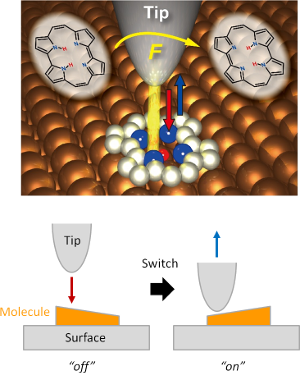
Heat transfer, electrical potential and light energy are common ways to activate chemical reactions. Applied force is another way, but dedicated studies for such a mechanical activation are limited, and this activation is poorly understood at the single-molecule level. Here, we report force-induced tautomerization in a single porphycene molecule on a Cu(110) surface at 5 K, which is studied by scanning probe microscopy and density functional theory calculations. Force spectroscopy quantifies the force needed to trigger tautomerization with submolecular spatial resolution. The calculations show how the reaction pathway and barrier of tautomerization are modified in the presence of a copper tip and reveal the atomistic origin of the process. Moreover, we demonstrate that a chemically inert tip whose apex is terminated by a xenon atom cannot induce the reaction because of a weak interaction with porphycene and a strong relaxation of xenon on the tip as contact to the molecule is formed.
2 May 2016 – Opening of PhD position – IDEX-DIPC
We announce the opening of a PhD position in theoretical physics on the topic of Dynamical aspects of quantum transport
in nanoelectronics, shared between the Theory group of Laboratoire Ondes et Matière d'Aquitaine (LOMA) from Bordeaux University and French
CNRS, and the Theory and Simulation group of Nanoelectronics at the DIPC. The application deadline is 10 June 2016.
For more information please consult the announcement posted at http://dipc.ehu.es/join_us.php.
16 March 2016 – Student internships available at the DIPC
If you are interested in a paid internship in Donostia-San Sebastián during your university studies and want to know the world of research, we have a number of exciting projects in nanoscience, physics and chemistry at the DIPC that may interest you. Check out http://internships.dipc.org.
22 February 2016 – Towards Reality in Modelling of Molecular Electronics (TRMME)
We are organizing the international workshop Towards Reality in Modelling of Molecular Electronics (TRMME) that will take place in San Sebastián, Spain, on June 13-17, 2016.
9 January 2015 – Journal of Physics: Condensed Matter
I joined the Advisory Board of Journal of Physics: Condensed Matter, covering the whole of condensed matter physics including soft condensed matter and nanostructures with experimental, theoretical and computational studies.
Looking forward to help shaping the strategy of this high quality journal. Check out also the new physics blog JPhys+ from IOP Publishing.
21 October 2014 – Vibrations at Surfaces (VAS15)
The 15th International Conference on Vibrations at Surfaces (VAS15) will
be celebrated in Donostia-San Sebastian during the week June 22-26, 2015.
We are working hard to set up an exciting program for next year!
Information about the event is continously being added to the conference web page at
vas15.dipc.org.
16 April 2014 – Research paper published in Nature Communications
Chemical control of electrical contacts to sp2 carbon atoms
by T. Frederiksen, G. Foti, F. Scheurer, V. Speisser, and G. Schull
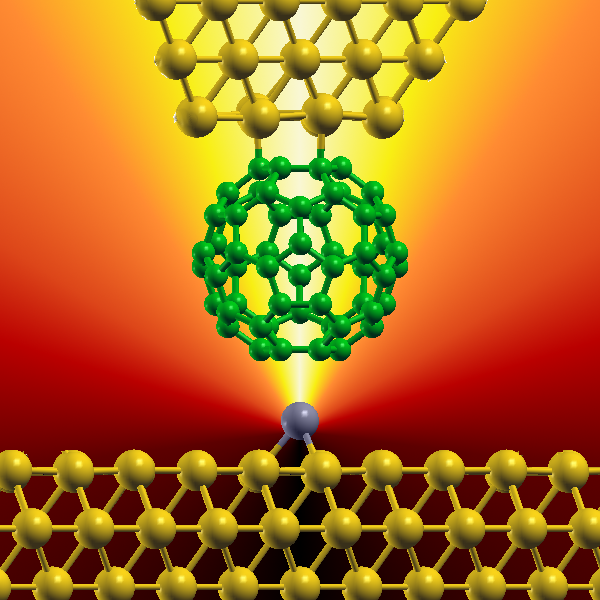 Carbon-based nanostructures are attracting tremendous interest as
components in ultrafast electronics and optoelectronics. The electrical
interfaces to these structures play a crucial role for the electron
transport, but the lack of control at the atomic scale can hamper
device functionality and integration into operating circuitry. Here we
study a prototype carbon-based molecular junction consisting of a
single C60 molecule and probe how the electric current
through the junction depends on the chemical nature of the foremost
electrode atom in contact with the molecule. We find that the
efficiency of charge injection to a C60 molecule varies
substantially for the considered metallic species, and demonstrate that
the relative strength of the metal-C bond can be extracted from our
transport measurements. Our study further suggests that a single-C60
junction is a basic model to explore the properties of electrical
contacts to meso- and macroscopic sp2
carbon structures.
Carbon-based nanostructures are attracting tremendous interest as
components in ultrafast electronics and optoelectronics. The electrical
interfaces to these structures play a crucial role for the electron
transport, but the lack of control at the atomic scale can hamper
device functionality and integration into operating circuitry. Here we
study a prototype carbon-based molecular junction consisting of a
single C60 molecule and probe how the electric current
through the junction depends on the chemical nature of the foremost
electrode atom in contact with the molecule. We find that the
efficiency of charge injection to a C60 molecule varies
substantially for the considered metallic species, and demonstrate that
the relative strength of the metal-C bond can be extracted from our
transport measurements. Our study further suggests that a single-C60
junction is a basic model to explore the properties of electrical
contacts to meso- and macroscopic sp2
carbon structures.
Nat. Commun. 5, 3659 (2014)
13-16 May 2013 – Workshop on Controlled Atomic Dynamics on Solid Surfaces: Atom and Molecular Manipulation (UEBA13)
Nicol�s Lorente (CIN2), Magnus Paulsson (Linnaeus University), and I thank all the participants of the workshop
on Controlled Atomic Dynamics on Solid Surfaces: Atom and Molecular Manipulation
dedicated to Prof. Ueba for contributing to a stimulating and dynamic meeting.
The workshop webpage is this one: http://dipc.ehu.es/ws_presentacion.php?id=91.
14 March 2013 – Announcement of Workshop on Controlled Atomic Dynamics on Solid Surfaces: Atom and Molecular Manipulation
Together with Nicol�s Lorente (CIN2) and Magnus Paulsson
(Linnaeus University) I am organizing a workshop to be held on May
13-16, 2013 at the DIPC. The topics include STM manipulation,
current-induced reactions, dynamics on surfaces, excitations at
surfaces, action spectroscopy, inelastic electron tunneling,
atom-by-atom construction of nano systems, etc. The workshop is
dedicated to Prof. Hiromu Ueba and to all of his contributions to these
fields.
More information about the workshop can be found here:
http://dipc.ehu.es/ws_presentacion.php?id=91.
24 February 2012 – TStutorial moved to the dipc web server
The TStutorial wiki, a user-driven introduction/tutorial to the TranSIESTA quantum transport program, was moved today to
http://dipc.ehu.es/frederiksen/tstutorial/
due to discontinued hosting service at dreamhosters.com.
1 February 2012 – Science communication on H-atom relays published in Elhuyar magazine
A science communication on H-atom relays, recently published in Nature
Materials, was given in Elhuyar Science and Technology magazine. The
article can be found
here (in basque).
7 December 2011 – Research paper published in PRL
Engineering Negative Differential Conductance with the Cu(111) Surface State
by B. W. Heinrich, M. V. Rastei, D.-J. Choi, T. Frederiksen, and L. Limot
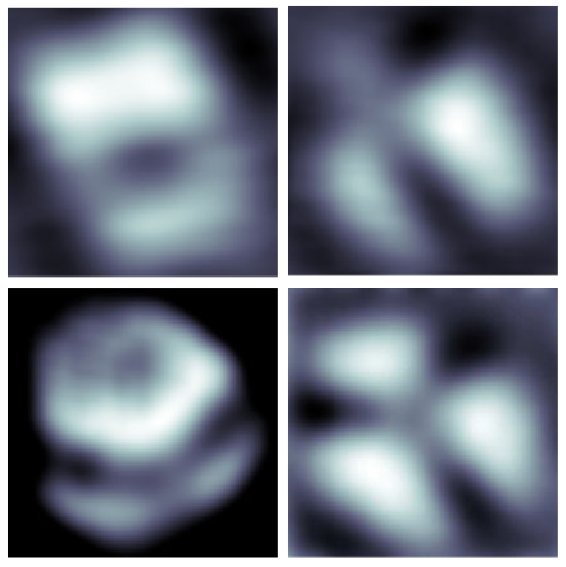
Low-temperature scanning tunneling microscopy and
spectroscopy are employed to investigate electron tunneling from a
C60-terminated tip into a Cu(111) surface. Tunneling between a C60
orbital and the Shockley surface states of copper is shown to produce
negative differential conductance (NDC) contrary to conventional
expectations. NDC can be tuned through barrier thickness or C60
orientation up to complete extinction. The orientation dependence of
NDC is a result of a symmetry matching between the molecular tip and
the surface states.
Phys. Rev. Lett. 107, 246801 (2011).
27 November 2011 – Research paper accepted in Nature Materials
H-atom relay reactions in real space
by T. Kumagai, A. Shiotari, H. Okuyama, S. Hatta, T. Aruga, I. Hamada, T. Frederiksen, and H. Ueba
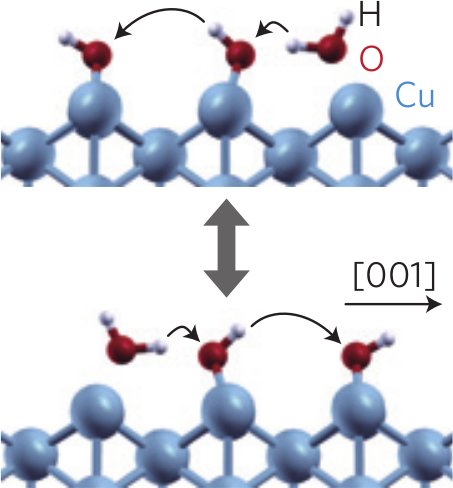
Hydrogen bonds are the path through which protons and hydrogen atoms can
be transferred between molecules. The relay mechanism, in which H-atom
transfer occurs in a sequential fashion along hydrogen bonds, plays an
essential role in many functional compounds. Here we use the scanning
tunnelling microscope to construct and operate a test-bed for real-space
observation of H-atom relay reactions at a single-molecule level. We
demonstrate that the transfer of H-atoms along hydrogen-bonded chains
assembled on a Cu(110)
surface is controllable and reversible, and is triggered by excitation
of molecular vibrations induced by inelastic tunnelling electrons. The
experimental findings are rationalized by ab initio calculations
for adsorption geometry, active vibrational modes and reaction pathway,
to reach a detailed microscopic picture of the elementary processes.
Nature Materials AOP, doi:10.1038/nmat3176
14 November 2010 – Research paper published in Nature Nanotechnology
Atomic-scale engineering of electrodes for single-molecule contacts
by Guillaume Schull, Thomas Frederiksen, Andres Arnau, Daniel Sanchez-Portal, and Richard Berndt
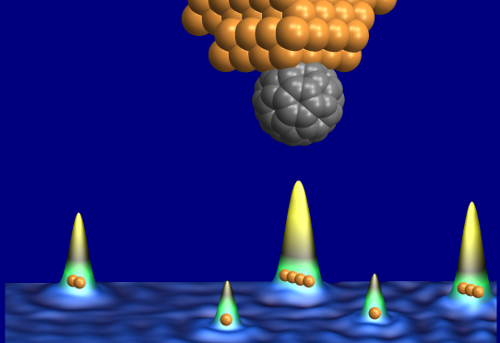
The transport of charge through a conducting material depends on the
intrinsic ability of the material to conduct current and on the charge
injection efficiency at the contacts between the conductor and the
electrodes carrying current to and from the material. According to
theoretical considerations, this concept remains valid down to the
limit of single-molecule junctions. Exploring this limit in experiments
requires atomic-scale control of the junction geometry. Here we present
a method for probing the current through a single C60 molecule while changing, one by one, the
number of atoms in the electrode that are in contact with the molecule.
We show quantitatively that the contact geometry has a strong influence
on the conductance. We also find a crossover from a regime in which the
conductance is limited by charge injection at the contact to a regime
in which the conductance is limited by scattering at the molecule. Thus,
the concepts of ‘good’ and ‘bad’ contacts, commonly used in macro- and
mesoscopic physics, can also be applied at the molecular scale.
Nature Nanotechnology 6, 23–27 (2011).
23 September 2010 – Interview published in local newspaper
In connection to the present celebrations of the 10 years anniversary
of the DIPC and the forthcoming
Passion for Knowledge
conference Ricardo D�ez Mui�o, Pedro Miguel Etxenike and I gave interview
to the local newspaper Gara:
"Una gran locura que se ha convertido en un gran invento".
8 September 2010 – DIPC workshop on "Inelastic Transport Phenomena"
The Donostia International Physics Center hosted a workshop on
Inelastic Transport Phenomena in the city of Donostia-San Sebasti�n on
September 1-3, 2010. The workshop aimed at the identification and
promotion of the common elements developed in experimental and
theoretical studies of inelastic transport phenomena, which are
fundamental for the development of nanoelectronics. The program of this
3-day workshop was built around several invited talks and a poster
session covering some important recent contributions in the field. The
workshop was organized by Dr. Aran Garcia-Lekue and myself together
with the steering committee of Prof. Andres Arnau, Dr. Nicolas Lorente,
Prof. Stephan Roche, and Dr. Daniel Sanchez-Portal.
Workshop webpage: http://dipc.ehu.es/ws_presentacion.php?id=54.
8 June 2010 – CECAM workshop on "Transport Phenomena in Molecular Nanostructures"
The CECAM workshop "Transport Phenomena in Molecular
Nanostructures" will be held in Zurich, Switzerland, in the days June
22-25, 2010. The objective of the workshop is to provide a platform
where computational scientists interact with mathematically and
experimentally oriented experts in the different subfields such as
Mesoscopic Physics, Surface Science, and Material Science. Organizers:
Thomas Frederiksen (DIPC), Ferdinand Evers (Karlsruhe Institute of
Technology, Germany), and Kyungwha Park (Virginia Tech, USA).
Workshop webpage:
http://www.cecam.org/workshop-434.html.
6 June 2010 – Video competition
Within the framework of the activities to mark the 10th
anniversary of the Donostia International Physics Center (DIPC), the
Elhuyar Foundation and the DIPC are organising a home video competition
designed to communicate science and technology. First prize: 3,000
euros, Second prize: 2,000 euros, Third prize: 1,000 euros.
Registration: from 3 May until 15 October, 2010.
Full information is available here:
http://www.onzientzia.tv/?lang=EN.
7 January 2010 – TStutorial wiki available
A three-day school on the TranSIESTA code took place in Barcelona on
December 14-16, 2009. The organizers of this event were Frederico D.
Novaes, M. Paulsson and T. Frederiksen. Everything related to the
course (presentations, exercises, etc.) is contained in this
wiki,
which is intended to be a user-driven introduction/tutorial to
the TranSIESTA quantum transport program.
TStutorial webpage: http://wiki.tstutorial.dreamhosters.com/wiki/Main_Page.
29 December 2009 – Inelastica 1.1 released
Inelastica-1.1 is released with a number of improvements and bug fixes.
It can be downloaded here.
13 November 2009 – Cover illustration of PRL
 Images from Passing Current through Touching Molecules is selected for the
cover of PRL volume 103, number 20.
Images from Passing Current through Touching Molecules is selected for the
cover of PRL volume 103, number 20.
12 November 2009 – In the media
The research publication "Passing Current through Touching Molecules" is mentioned in several news media,
including Universia.es (spanish),
UPV/EHU (spanish),
UPV/EHU (basque),
EurekAlert,
ScienceDaily.com,
nanowerk.com,
sciencecodex.com,
nanotech-now.com,
basqueresearch.com,
Internetchemie.info,
nanotecnologica.com (spanish),
pressrelations.de (german),
and idw-online.de (german).
30 October 2009 – PRL and Focus article
Physical Review Focus article "Molecular Currents"
on the publication
Passing Current through Touching Molecules
by Guillaume Schull, Thomas Frederiksen, Mads Brandbyge, and Richard Berndt
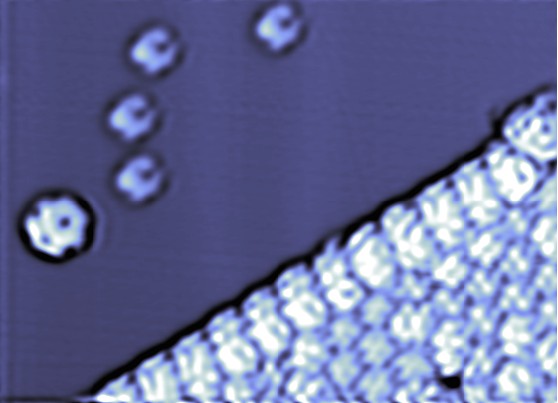 The charge flow from a single C60 molecule to another one has been probed. The conformation and electronic states of both molecules
on the contacting electrodes have been characterized using a cryogenic scanning tunneling microscope. While the contact conductance of a single molecule between
two Cu electrodes can vary up to a factor of 3 depending on electrode geometry, the conductance of the C60-C60 contact is consistently lower
by 2 orders of magnitude. First-principles transport calculations reproduce the experimental results, allow a determination of the actual
C60-C60 distances, and identify the essential role of the intermolecular link in bi- and trimolecular chains.
Phys. Rev. Lett. 103, 206803 (2009).
The charge flow from a single C60 molecule to another one has been probed. The conformation and electronic states of both molecules
on the contacting electrodes have been characterized using a cryogenic scanning tunneling microscope. While the contact conductance of a single molecule between
two Cu electrodes can vary up to a factor of 3 depending on electrode geometry, the conductance of the C60-C60 contact is consistently lower
by 2 orders of magnitude. First-principles transport calculations reproduce the experimental results, allow a determination of the actual
C60-C60 distances, and identify the essential role of the intermolecular link in bi- and trimolecular chains.
Phys. Rev. Lett. 103, 206803 (2009).
13 October 2009 – Release of Inelastica 1.0
Inelastica-1.0 released on SourceForge
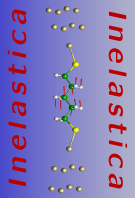
Inelastica is the name of a Python package related to the SIESTA / TranSIESTA DFT
codes. It is written together with Magnus Paulsson and is freely
available for download here:
https://sourceforge.net/projects/inelastica/
For more information please have a look at the project wiki.